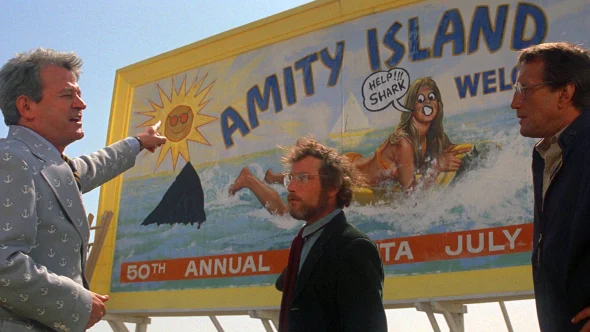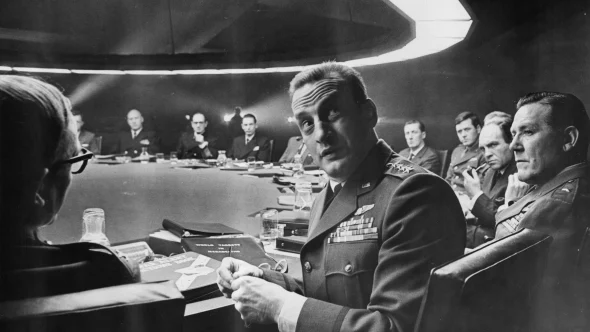
"To be honest, really no subject is off limits with me," says the production designer Jess Gonchor. His last few projects have seen him designing films such as the Old West anthology The Ballad of Buster Scruggs, Greta Gerwig's adaptation of Little Women, and the horror sequel A Quiet Place Part II, all completely different from the last. "When I start looking at a possible project, I immediately look at what the story is about and decide whether it's a story that I like or I identify with in some way. Maybe it’s a story I think needs to be told."
"The other big component that is important to me in selecting a project is collaboration," he explains. "You spend a lot of time together with the filmmaker and the team, and it is so vital to be comfortable with each other and in sync. I want to make sure that we are all drinking the same Kool-Aid to create something special."
Gonchor's most frequent collaborators are The Coen Brothers, with whom he has been working since 2007's No Country for Old Men. He was Oscar nominated for Best Production Design for True Grit (2010) and Hail, Caesar! (2016), both shared with set decorator Nancy Haigh.
His latest project is White Noise, filmmaker Noah Baumbach's adaptation of Don DeLillo's 1985 novel about a family's attempts to deal with the mundane conflicts of everyday life while grappling with the universal mysteries of love, death, and the possibility of happiness in an uncertain world. A darkly comedic period piece, the film allowed Gonchor to take a uniquely technicolor approach to the world.
"Using bold, saturated colors was definitely something I wanted to do, and it was a departure from what I have done in the past," Gonchor reflects. "With the first film I designed, Capote, I stuck to a strict palette of about five colors... Two of which were black and white. In the years since, I have learned to trust my instincts on using color — or not — to tell the story.
"White Noise is a relatively dark story about a family consumed with the fear of death," he continues. "Not only did I want to capture the vibrance of the 1980s, but I also wanted to juxtapose the bright reality they lived in, compared with the darkness of their obsessions. I wanted the color design to have a strong presence while counterbalancing the dark toned environments, making it a palatable package for the audience."
Below, Gonchor shares with A.frame five films that have taught him the power of moviemaking and shaped his love of production design.

Directed by: Steven Spielberg | Production Design by: Joe Alves
Jaws had such an impact on me the summer of '75. As we all know, shark attacks at the beach are rare, but the threat is always constant. My family spent time in Amagansett every summer, a similar resort town to Amity Island. When I watched Jaws for the first time, I felt true fear. Fear that what I was watching would leap from the screen to my life. It was no longer just, 'Oh, that's just something that happens in the movies.' It felt real now. I realized then the impact movies were capable of having on people’s emotions and life.

Directed by: Stanley Kramer | Production Design by: Rudolph Sternad
This was one of the first funniest movies I remember seeing. Not only did it introduce me to comedy, but it was the first time this New Yorker saw California. A wacky treasure hunt/road race, beginning in Northern California, driving the coast all the way South. The landscape was so foreign and exciting. And not only was it a visual adventure, but the cast was so extensive. You never knew what comedy star was going to show up around the next curve. The way the story 'travels' has always stuck with me… the visual and noticeable sense of the journey for each character. It's a trip I revisit often.

Directed by: Cecil B. DeMille | Production Design by: Hal Pereira, Walter H. Tyler, Albert Nozaki, Sam Comer, and Ray Moyer
It is my earliest memory of watching a movie, and we would watch it every year as a family. It was an extravaganza. And, with no commercials, it clocks in at just under 4 hours. It even had an intermission! The fact we could watch it at home together was something I would look forward to each year. Growing up in a Jewish household, this movie was also a visual reenactment of Passover and the stories of my people. I loved seeing the colors and story come to life, seeing the parting of the sea was always the highlight for me. It was also my first introduction to the C.B. DeMille Hollywood epic, and boy, was it grand.

Directed by: Stanley Kubrick | Production Design by: Ken Adam
I first watched Doctor Strangelove in college, and it introduced me to how slick and powerful production design could be. Devoid of color but still so theatrical, it combines shadows and drama to create a world that was mesmerizing. I learned the power of lighting and of color (or lack of) to create atmosphere and storytelling. For example, how the lighting was used in the War Room set. This lighting design was something I had never seen before. The space is defined only by practicals. The lights only illuminate specific areas of the set, but then, the shadows are equally used to communicate the vastness of the room. You can't really see what else is happening in the room but you know there is a lot. What is unseen says so much about what is happening in the room. I continually try to see if and where unique lighting by practicals can help add to the visual story.

Directed by: Cameron Crowe | Production Design by: Stephen J. Lineweaver
I love Jerry Maguire so much. It is a contemporary film that embraces a passion for sports, a drive for success, and unexpected love. The environments created also tell a great visual story of life in the '90s. This movie is important to me, because it was the first time I recognized and saw the value of good visual design in a contemporary film. I realized that great film design wasn't just important in period or fantasy films, but it was equally important in contemporary films. I also grew in my appreciation that sometimes you have to let the heart of the dialogue and acting shine the brightest. I never want my sets to get in the way of the story.







